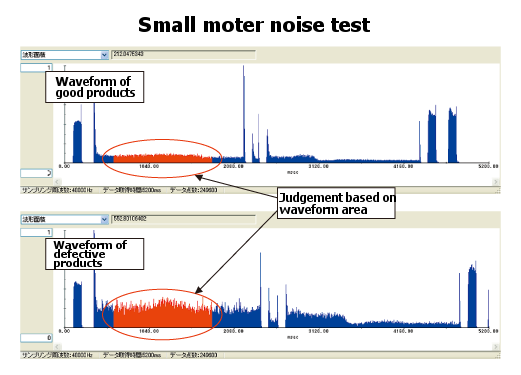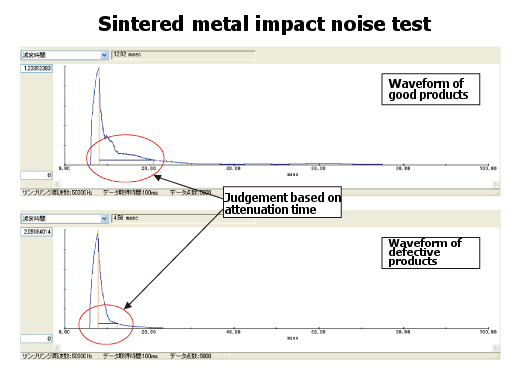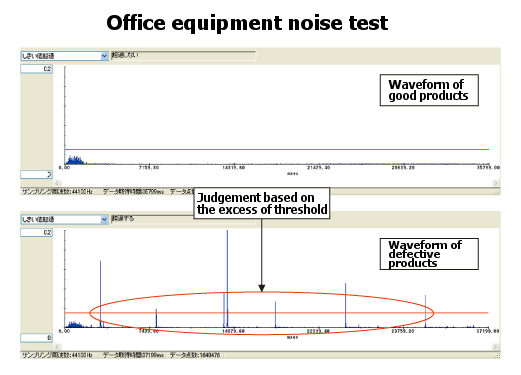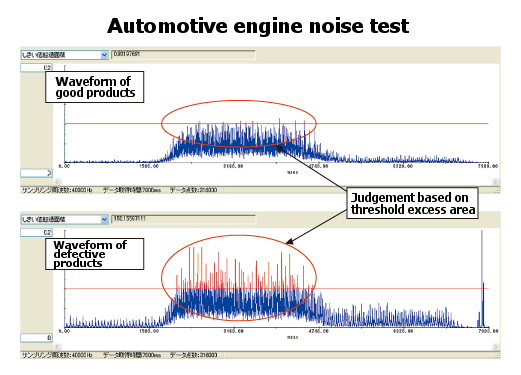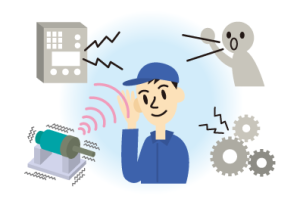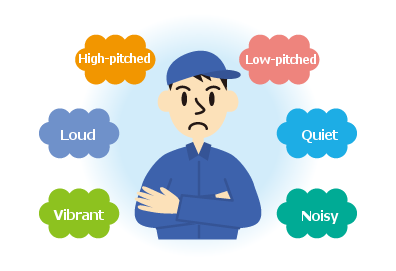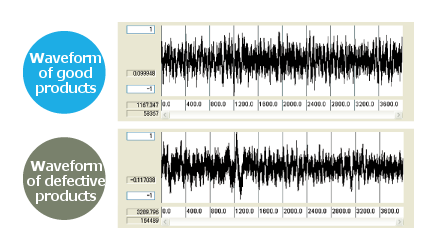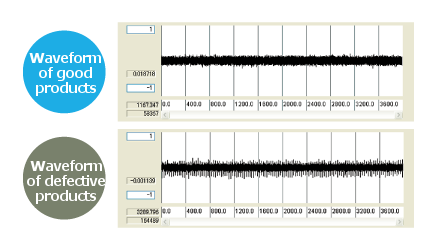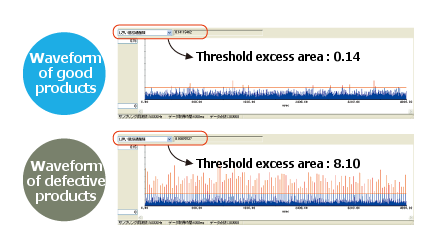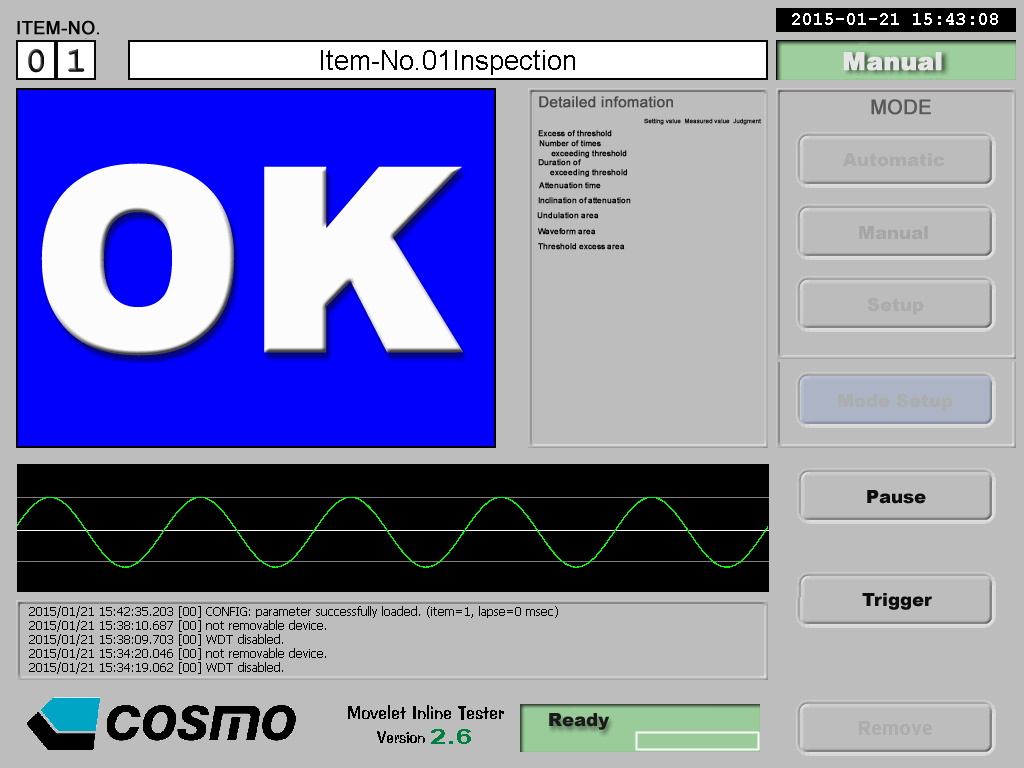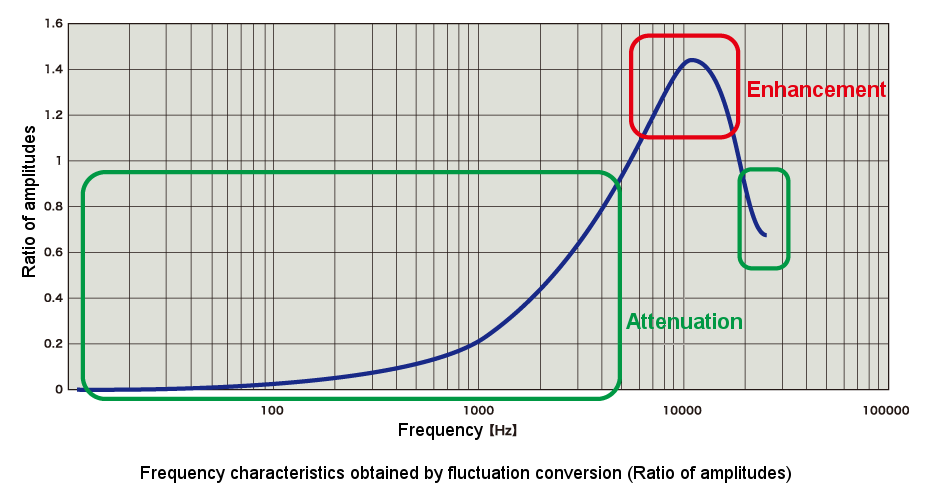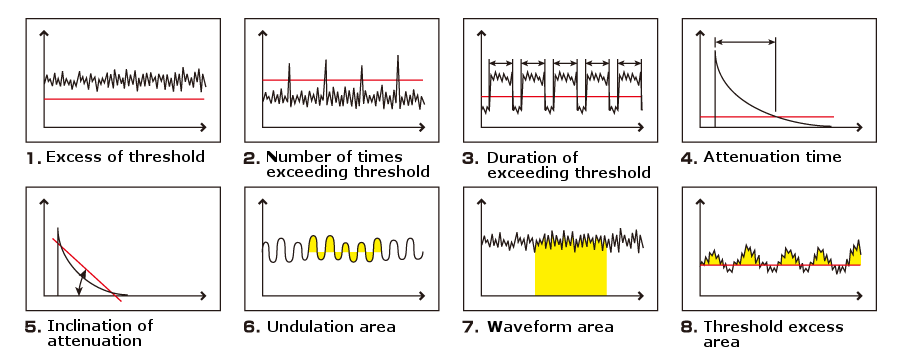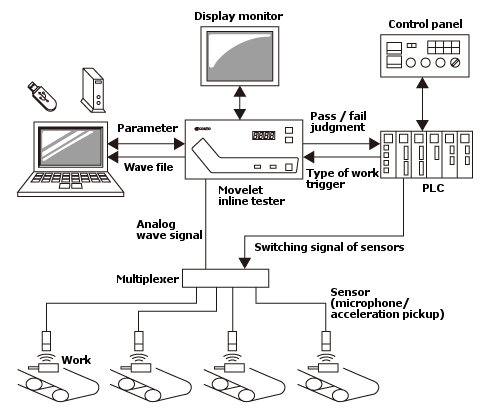Conventional waveform analysis technique has such a problem that the result of analysis differs from that made based on human senses.
The “Movelet”, by its unique analysis method, makes judgments similar to those made based on the human senses.
Conventional waveform analysis technique
The conventional waveform analysis is broadly divided into time-series analysis and frequency analysis.
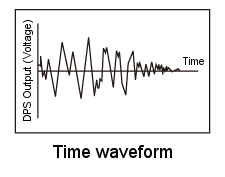 | 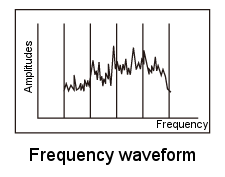 |
In the time-series analysis, chronological changes can be analyzed along the time axis.However, it is difficult to determine the causes of chronological changes. | In the frequency analysis, the waveform to be analyzed is resolved into frequency components, and their respective amplitudes are analyzed. |
The FFT (Fast Fourier Transform) is typically used for the frequency analysis.
The FFT is effective to analyze respective frequencies since the data to be analyzed can be resolved into each frequency component.
The concept of time does not exist in the FFT. Consequently the result of analysis substantially differs from the one made based on the human senses; such as the timing of amplitude generation is not reflected in the analysis result and the distinction between intermittent generations of large-amplitude and continuous generations of small-amplitude cannot be made.
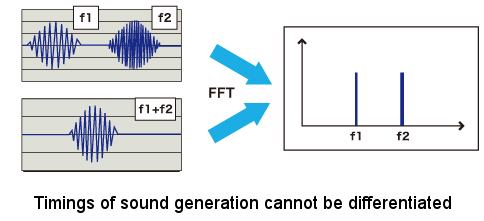
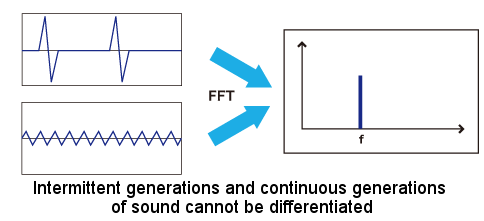
Waveform analysis by Movelet
Waveform analysis by Movelet is an intermediate method between the time-series analysis and the frequency analysis.
Analysis is made on the time-series waveforms obtained by enhancing specific frequency components (fluctuation conversion) for the input waveform.
The fluctuation conversion processes and enhances specific frequency range components included in the raw waveform.
This processing makes it possible to observe the chronological changes of specific fluctuation components invisible in the raw waveform.
Applications
Proposals for noise test system
Proposal for transmission assembly noise test system → Download page
Proposal for noise test on various types of motors → Download page
Examples of waveform analysis
